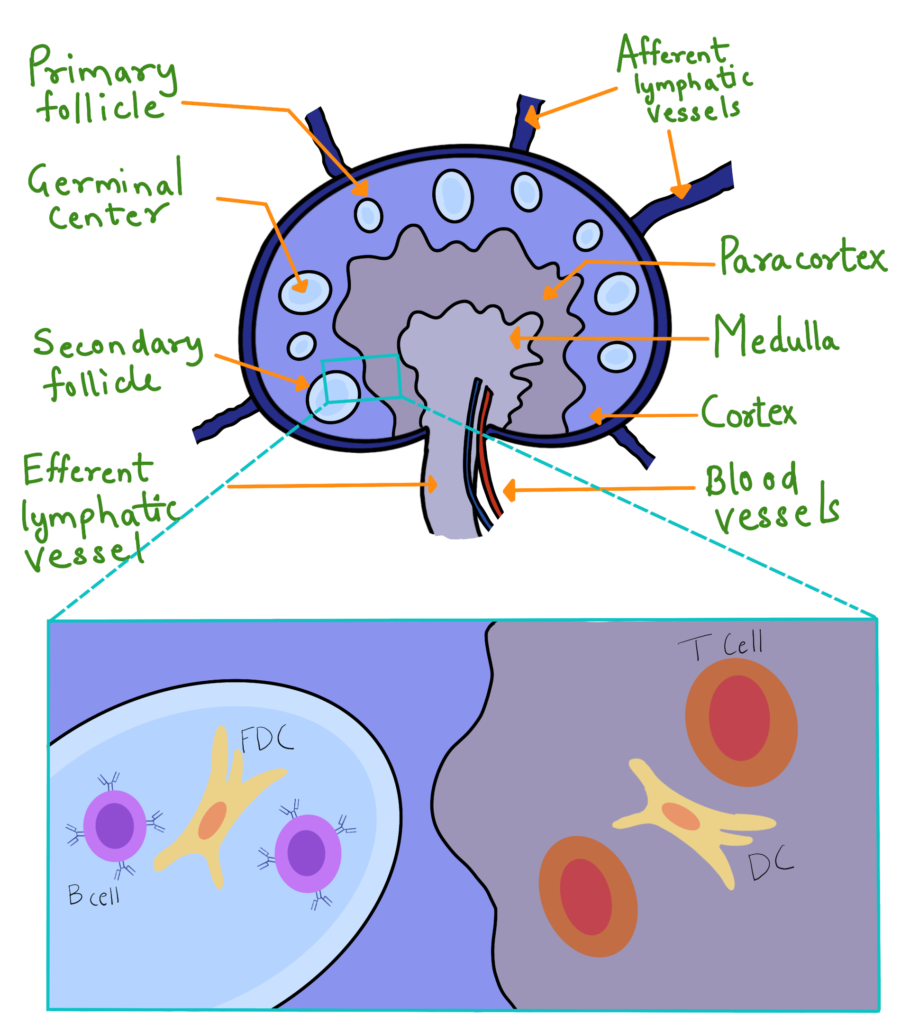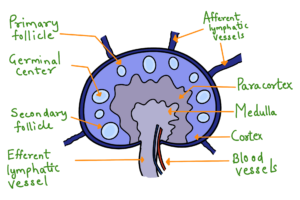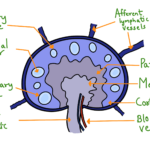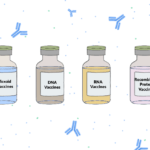In the last article, we discussed different types of vaccines. This article mainly focuses on the working of vaccines to generate an immune response in a body when administered. For a vaccine to work most crucial factor, it should generate effective antibodies against the antigen. The second most crucial factor is the generation of memory response against the antigen. Hence, after vaccination, the body will generate immune response right away when an antigen enters the immune system. First, let us consider two important types of cells in the immune system. As the name suggests, B-lymphocytes are the cells that mature in the bone marrow of host and produce plasma cells that eventually produce specific antibodies. T-lymphocytes are the cells that mature in the thymus of the host and are responsible for many functions in the immune system, some of which are B-cell maturation, cytokines production etc. These two major types of cells form two significant arms of the host’s immune system, known as the T-cell arm and B- cell arm. For a vaccine to be highly effective against the disease, that vaccine should trigger both the arms of the immune system. In the following section, we will take into consideration actual events happening once the vaccine is administered.
When the vaccine is administered in the host, Antigen Presenting Cells or simply APCs (Cells capable of presenting antigen on their surface) start accumulating at the area where antigens are present. Antigens have a specific structure known as Pathogen Associated Molecular Signals or briefly PAMS. APCs recognize these PAMS of the antigens and present them on their surface. This process of presenting antigens on the surface triggers the maturation and accumulation of more APCs. Once enough APCs are accumulated and matured, these APCs migrate through the lymphatic vessel and reach the nearest lymph node. A lymph node is a place where B and T cell activation takes place. As APCs travel through the lymph vessel to the nearest lymph node, vaccine injections are usually given in an area closest to a lymph node. Once APCs reach the lymph node, these mature APCs start calling immature B-lymphocytes in the lymph node. These immature B-lymphocytes interact with the mature APCs with the help of T-lymphocytes and produce plasma cells. Plasma cells are capable of producing two types of antibodies, IgG and IgA. However, research in immunology has found that the antibodies produced by plasma cells as a result of interaction between B-lymphocytes and APCs are short-lived, less in number and have low affinity.
Some of the activated B-cells migrate to a specialized structure in the lymph node known as primary follicles. In the primary follicles, these activated B-cells interact with follicular helper T-cells and with follicular dendritic cells. This interaction results in the formation of a large number of plasma cells. The primary follicles convert to secondary follicles and finally to germinal centres. After leaving germinal centres, these newly formed plasma cells produce IgG antibodies with very high affinity and specificity. These antibodies have the potential to combat the disease-causing pathogen entering the host’s system.

Generation of memory:
Some of the plasma cells, after leaving the germinal centre to migrate to bone marrow. After entering bone marrow, they convert to memory B-Cells. Therefore, memory B-cells have the potential to recognize the antigen in the following encounters in future.
So next time when you go and take a vaccine now you know what will happen in your system and how that vaccine will work.
Until then, ‘Cherish Science’.




